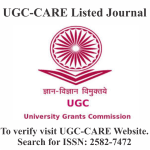TRADITIONAL PANCHAYATS IN JAUNSAR-BAWAR
DOI:
https://doi.org/10.29121/shodhkosh.v5.i5.2024.3914Keywords:
Syanachari, Syana, Khumdi, Chakrota, Pahikasht, UdavaAbstract [English]
The traditions in any society evolve over time, reflecting changes in circumstances. In tribal societies like Jaunsar-Bawar, cultural practices hold significant value, with the Syana and Khumdi systems serving as traditional panchayats. The British government recognized the uniqueness of the Syanachari system and granted legal rights to the Syanas, which helped with revenue collection and ensured smooth administrative functions. Although the Syanachari practice was abolished after independence, the Syana and Khumdi systems still retain social significance in Jaunsari society today.
References
Atkinson, Edwin T. (1986) Himalayan Gazetteer Translated by Prakash Thapliyal, Uttarayan Publications, Himalaya Sanchetna Sansthan.
Majumdar, D.N.(1962) Himalayan Polyandry (Structure, Functioning and Culture Change: A Field Study of Jaunsar-Bawar), Bombay and New York: Asia Publishing House.
Ritual complex and social structure in Jaunsar-Bawar (census of India,1971,series 1, India) office of the Registerar General,India 1974.
Uniyal, Hema (2020) Jaunsar-Bawar, Ranwai –Jaunpur: society,culture,architecture and tourism,Uttarabooks,Dehradun.
Walton, H.G., Gazetteer of Dehradun, 1911,reprint Dehradun, pp 192-193
Chand Devender,Kaushal Vijay (2021), Traditional power institutions: tribes of India, Indu book services, Delhi.
Downloads
Published
How to Cite
Issue
Section
License
Copyright (c) 2024 Kalpna Kumari

This work is licensed under a Creative Commons Attribution 4.0 International License.
With the licence CC-BY, authors retain the copyright, allowing anyone to download, reuse, re-print, modify, distribute, and/or copy their contribution. The work must be properly attributed to its author.
It is not necessary to ask for further permission from the author or journal board.
This journal provides immediate open access to its content on the principle that making research freely available to the public supports a greater global exchange of knowledge.




















